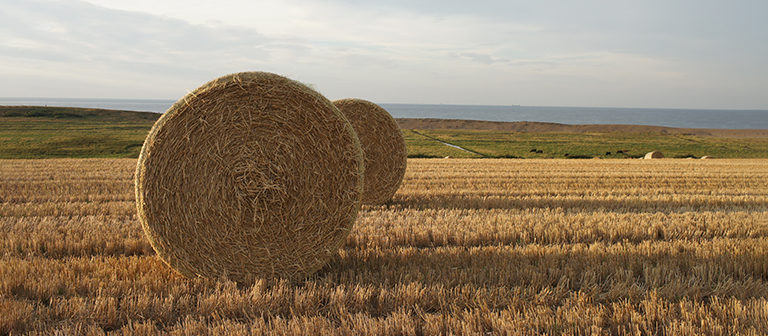ADA responds to Defra’s Environmental Land Management Policy Consultation

ADA submitted a response to Defra’s ELM (Environmental Land Management) policy consultation on Friday 31st August. Thank you to ADA members who submitted points for inclusion.
DEFRA’s “ELM Policy Discussion Document” had been issued earlier in the year with a call for responses from “farmers, foresters and land managers”. The document set out the proposed scheme design and requested feedback on particular elements such as structure, design principles and objectives and then more detailed suggestions for payment methods and calculations, the types of activity the scheme should cover and the provision and benefits of advice and guidance. The document also provided an overview of the tests and trails currently underway which are testing specific elements and delivery methods and the National Pilot planned to begin in late 2021.
The proposed ELM scheme sets out a structure of three tiers, aimed at delivering “public goods for public money”, or more specifically, funding for farmers and land managers to deliver environmental improvements in line with the goals of the 25 Year Environment Plan. The proposed delineation between the tiers appears to be the spatial scales at which the environmental improvements are applied and the types of land managers which can be involved in each tier, from a farmer on a field and farm scale in tier one to a collaboration of Land Managers on a large landscape scale in tier 3. Much of what is proposed is a hybrid of the most successful elements of previous agri-environment schemes but there are new concepts which are being explored such as payment for results rather than actions, devolution of responsibility to decide area priorities and the wider provision of advice and guidance.
ADA’s responses to the consultation naturally focused on how the proposed elements of ELM could better contribute to the wider aims and objectives of water-level and resource management. We made it clear that we consider water-level and resource management to be one of the best examples of providing “public goods for public money” there is and gave many examples where this has been demonstrated. We stressed that water-level and resource management should be made a priority in all farming and environmental policy and strategies considering the criticality of water to each. We also urged the Government to better align its policies and strategies, particularly the recently published National Flood & Coastal Erosion Risk Managent (FCERM) Strategy, and the Government’s Farming for the Future policy if the goals of both and the 25 Year Environment Plan are to be achieved.
Our position was clear that the unfunded flood alleviation service which many farmers have provided to date, either deliberately or not, cannot continue to go unrewarded or undervalued. We set out detailed examples of when farmland inundation could be successfully controlled and rewarded through the scheme and highlighted that Risk Management Authorities (RMAs), such as local IDBs, are well placed with their local knowledge and practical expertise to assist in with designing and delivering such measures.
Strong recommendations were made for ELM activity to be multi-functional where possible and to focus on delivering long-term environmental improvements relating to water-level management which are resilient to the weather extremes we are to expect from climate change. But we also suggested that simple activities which could deliver catchment-scale improvements in water-level management, such as improved soil management, should be made mandatory.
What remains unclear at this stage is to what extent public authorities, are going to be able to participate in ELMS. In particular, we requested clarity around the eligibility of IDBs to apply for ELM funding and the opportunities for RMAs such as IDBs to be involved in the advice and guidance provision. We look forward to learning more from DEFRA’s response to the consultation, expected in autumn this year.
A link to ADA’s full response can be found here
Archive
- November 2025
- October 2025
- July 2025
- June 2025
- March 2025
- February 2025
- January 2025
- December 2024
- November 2024
- October 2024
- September 2024
- August 2024
- July 2024
- June 2024
- May 2024
- April 2024
- March 2024
- January 2024
- December 2023
- November 2023
- October 2023
- September 2023
- August 2023
- July 2023
- June 2023
- May 2023
- April 2023
- March 2023
- February 2023
- January 2023
- December 2022
- September 2022
- August 2022
- July 2022
- June 2022
- May 2022
- April 2022
- March 2022
- February 2022
- January 2022
- December 2021
- November 2021
- September 2021
- July 2021
- May 2021
- March 2021
- February 2021
- January 2021
- December 2020
- November 2020
- October 2020
- September 2020
- August 2020
- July 2020
- May 2020
- April 2020
- March 2020
- February 2020
- January 2020
- December 2019
- November 2019
- October 2019
- September 2019
- August 2019
- July 2019
- June 2019
- May 2019
- April 2019
- March 2019
- February 2019
- January 2019
- December 2018
- November 2018
- October 2018
- September 2018
- August 2018
- July 2018
- June 2018
- May 2018
- April 2018
- March 2018
- February 2018
- January 2018
- December 2017
- November 2017
- October 2017
- September 2017
- August 2017
- July 2017
- June 2017
- May 2017
- April 2017
- March 2017
- February 2017
- January 2017
- October 2016
- September 2016
- August 2016
- July 2016
- June 2016
- May 2016
- April 2016
- March 2016
- January 2016
